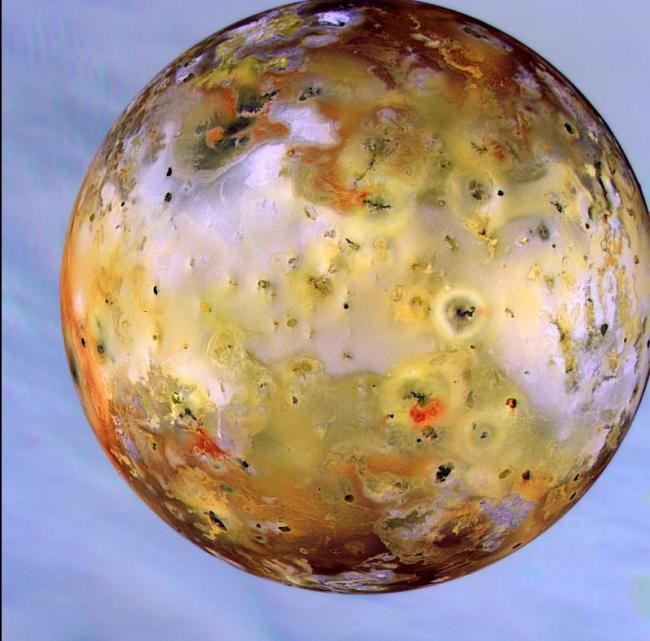
Io, the most volcanic body in the solar system, is seen in front of Jupiter's cloudy atmosphere in this image from NASA's Galileo spacecraft, now orbiting the giant planet. Astronomers have now mapped the atmosphere of Io using the Submillimeter Array.
Io is one of the four moons of Jupiter that Galileo discovered after he turned his new telescope heavenward. They shocked him and his contemporaries because they demonstrated that heavenly bodies can orbit objects other than the earth. Io in particular continues to amaze scientists. It orbits closer to the cloud tops of Jupiter than our moon does to the earth, and is strongly subjected to Jupiter's powerful gravitational field and its intense radiation belts. One consequence is that Io is the most volcanic object known anywhere, with lava flows, erupting with plumes of sulfurous material, and a changing atmosphere of noxious gases. The 1979 Voyager flyby observations revealed many of these details, but many puzzles remain. It is estimated, for example, that one ton of material needs to be ejected into Io's atmosphere every second in order to replenish the gases that escape from its atmosphere, but it is not known whether it all comes from volcanic gas or perhaps from the evaporation of surface ices.
CfA astronomers Arielle Moullet and Mark Gurwell, together with two colleagues, used the Submillimeter Array to image the surface of Io in key diagnostic lines of sulfur dioxide and, for the first time, in sulfur monoxide and sodium chloride. They write in the latest issue of the journal Icarus that these three species of gases appear to be concentrated on the anti-jovian side of Io, although with different spatial distributions. The scientists conclude that ice sublimation is most probably the origin of the sulfur dioxide, while the sulfur monoxide may in turn be a product of the sulfur dioxide interacting with radiation. The sodium chloride, on the other hand, most likely comes from volcanoes. The group also derives temperature and density information for the gas. The new results help to sort out competing models of this bizarre satellite, and highlight the disruptive role that volcanoes can play in other solar system bodies besides the earth.